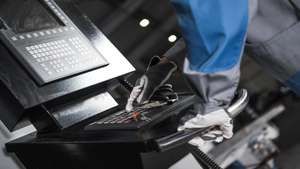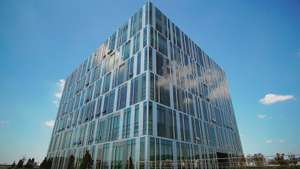
Two-tier integral indicator system for controlling the material flow heat-power engineering objects.
 Petrо Kulikov 1 D.Sc., Professor
Petrо Kulikov 1 D.Sc., Professor Alla Bielova 1 D.Sc., Associate Professor
Alla Bielova 1 D.Sc., Associate Professor Nataliia Zhuravska 1* Ph.D., Associate Professor
Nataliia Zhuravska 1* Ph.D., Associate Professor
1 Kyiv National University of Construction and Architecture, Vozduhoflotsky Avenue 31, Kyiv, 03680, Ukraine;
Received: 11/20/2018, Accepted: 12/30/2018, Available online: 12/30/2018.
DOI: https://doi.org/10.32557/useful-2-4-2018-0009
HDL: https://hdl.handle.net/20.500.12334/94
*Corresponding author e-mail: nzhur@ua.fm
Under a creative commons license. Volume 2, Issue 4, 2018, pages: 80-87.
Plagiarism was checked by Grammarly
Author Keywords: heat-and-power objects electromagnetic fields, heating system and material flows, passive monitoring, two-level indicator control.
Abstarct
The essence and the possibility of creation and application of a compliant two-level integrated indicator control on the technology of non-reagent water preparation in the heating systems of heat energy objects of the building industry is substantiated. Proposed scientific principles concerning development of indicator control system. It is established that quantitative characterization of components of material flows of heat systems as a measure of their additive functions and response to changes in catalytic activity is determined by their subordinated indicator control mechanism.
Two-level control involves:
1) the relationship between the device for receiving magnetized water (parameters) and the heating system (specific indicators and their indices);
2) the relationship between the specific indicators characterizing the state of material flows of the heating systems and the trends of changes in material flows under the conditions of the action of electromagnetic fields on them - the hydrochemical, electrophysical and thermophysical potentials. Indicator control system provides engineering-ecological aspects of non-reagent water preparation of systems of heat energy objects of the building industry.
1. Introduction.
Information support of nature management and environmental protection of thermal power facilities (FS) of the construction industry is associated primarily with control of natural resources (energy resources – energy, water) that is achieved by nonchemical water treatment in electromagnetic fields (EMFs) due to limited data available in scientific literature [1, 2, 3, etc.] in respect of changes directly, material flow teplosistemy in the process of exposure to high-frequency pulses, there is a need of systematization and formalization of the results of the passive monitoring [4] with the help of integrated indicator systems for determination of dynamics of changes in material flows of the feasibility study when using artificially (electromagnetic fields) anthropogenic-caused by magnetized water flows in them. It can be noted that engineering and technological aspect of the passive monitoring and the proposed methods of its formalization, which allows to establish structural and functional properties of the impact of production of technogenic influence on the material flow systems of the feasibility study. And environmental engineering aspect of passive monitoring allowed to testify that in the process of reagent-free water treatment with EMFs was a decrease in boonratana in pipelines and reduced use of natural resources [5, 6].
System indicators, in this aspect, allow you to determine the maximum allowable emissions into the air.
Solving the issues of nature use of resources and nature protection activities (atmosphere protection) against the background of the creation of highly effective non-reagent technological water preparation [7] systems of thermal energy objects allow us to state that the results of research are relevant and require further study.
References
[1] Goncharuk V. Science of Water / V.Goncharuk // Scientific release. - K.: Scientific Opinion, 2010. – 512 pp.
[2] Bereka O.M. Fragrant brewing barley in the electrostatic field of high voltage / O.Bereka, L.Chervinsky, M.Salad // Electrification and Automation of Agriculture. - Kiev - 2003. - № 2. – pp. 9-12. .
[3] Malkin E. Special issues of heat and mass transfer / Textbook // E.Malkin, I.Furtat, N.Zhuravska. - Kyiv: KNUBA. - 2017 - 288 pp.
[4] Mitryasova O. Chemical basis of ecology. - Kyiv - Irpin: Peruch, - 1999. - 192 p.
[5] Kulikov P. Management of Production Processes / P.Kulikov, N.Zhuravska // E-mail. Int. The collection "Transboundary cooperation in the field of ecological safety. and ohr. okr. sredy", IV International Laboratory. conf. Gomel, June 4-5, 2018, GSU named after F.Scorini, 2018. - p. 181-184.
[6] Kulikov P. Environmental management of production processes in heating systems when receiving magnetic water in a reagent-free method with the aim of environmentalization / P.Kulikov, O. Bondar, N.Zhuravska // International Journal of Engineering and Technology (UAE). Vol. 7, no 3.2. - 2018 - C.621-625.
[7] N. Zhuravska “Characterization and substantiation of conflict situations in the preparation of water for heat energy objects in the construction industry.” USEFUL online journal, vol. 2, no. 3, pp. 07–09, September 2018. DOI: https://doi.org/10.32557/useful-2-3-2018-0002
Please cite as: P. Kulikov, A. Bielova, N. Nataliia Zhuravska “Two-tier integral indicator system for controlling the material flow heat-power engineering objects.” USEFUL online journal, vol. 2, no. 4, pp. 80–87, December 2018. DOI: https://doi.org/10.32557/useful-2-4-2018-0009








Comments